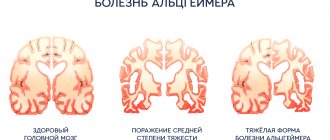Conversion disorder - symptoms
Some of the symptoms of conversion disorder typically include:
- weakness
- paralysis of arms or legs
- loss of balance
- seizures, sometimes with limited consciousness
- episodes of unresponsiveness
- difficulty swallowing
- feeling of a lump in the throat
- shaking and tremor
- difficulty walking
- slurred speech or loss of ability to speak
- difficulty hearing or hearing loss
- double vision, blurred vision, or episodes of blindness
- numbness or loss of touch
Symptoms of conversion disorder vary from person to person and depend on the type of neurological disorder the person has.
Symptoms can be mild or severe, may stop or be continuous, and usually affect the body's ability to function properly.
Pathogenesis (what happens?) during Dissociative (conversion) disorders
Dissociative states usually begin and end suddenly, and this is observed quite rarely, if you do not take into account some specially developed methods of influence or procedures, for example, hypnosis. In these cases, the dissociative disorder changes or disappears depending on the duration of the session or procedure.
Any type of dissociative disorder may recur after some time (we are talking about several weeks or even months). In those cases where the onset of the disorder was preceded by insoluble problems or disrupted interpersonal relationships, it takes on a chronic form, especially with regard to paralysis and anesthesia.
Diagnostics
A doctor will diagnose conversion disorder using criteria that include:
- loss of movement control or sensory symptoms
- symptoms that occur after a traumatic or stressful event
- symptoms that have no underlying medical or physical cause
- symptoms that interrupt daily activities
Your doctor may suggest additional diagnostic tests to rule out other diseases.
Additional diagnostic methods:
- computed tomography (CT)
- radiography
- electroencephalograms (EEG), which record brain activity and can rule out neurological causes of seizures
- blood pressure measurement and reflex tests
Once diagnosed, there are many treatment options for conversion disorder.
Dissociative (conversion) disorder - symptoms and treatment
Dissociative disorders involve problems with memory, identity, emotions, perception, behavior and sense of self. Dissociative symptoms can potentially disrupt every area of mental functioning.
Examples of dissociative symptoms include the experience of alienation or feeling as if one is outside the body, and memory loss (amnesia). Dissociative disorders are often associated with previous experiences of trauma.
There are several types of dissociative disorders[2]:
- Dissociative amnesia (formerly psychogenic amnesia).
- Depersonalization/derealization.
- Dissociative identity disorder (formerly multiple personality disorder).
- Trance and obsession.
Dissociative amnesia and dissociative fugue
This form of the disorder is characterized by temporary loss of memory and memories due to a traumatic or stressful event. It is considered the most common dissociative disorder documented. The main symptom is difficulty remembering important information about yourself. Dissociative amnesia may relate to a specific event or to information about identity and life history. The onset of an amnesia episode is usually sudden and can last from a few minutes to several years (depending on the severity of the patient's injury).[4][5] The average age of people affected by this type of disorder has not been established. Therefore, a person may experience several episodes of this disorder throughout his life.
Dissociative fugue. Dissociative amnesia also includes dissociative fugue, which was previously identified as a separate type of dissociative disorders. It is a reversible amnesia for personal identity that pushes a person on an unplanned journey or wandering. Sometimes accompanied by the establishment of a new identity. This condition is usually associated with stressful life circumstances. May be short or long.[3]
Both dissociative amnesia and dissociative fugue usually appear in the adult population and occur less frequently after age 50. The International Classification of Diseases (ICD-10) classifies conversion disorder as a dissociative disorder,[6] while the Diagnostic and Statistical Manual of Mental Disorders (DSM-IV) classifies it as a somatoform disorder.
Depersonalization disorder
This form of the disease is characterized by periods of alienation from oneself or the surrounding world. This disorder involves persistent feelings of detachment from actions, feelings, thoughts and sensations, as if the person were watching a movie (depersonalization). Sometimes people may feel that other people and things in the world around them are not real (derealization). At the same time, the awareness remains that this is just a feeling and not reality. Symptoms may not last long or may return sporadically over many years. The average age of onset of this disorder is 16 years, although episodes of depersonalization may begin in early and middle childhood. Less than 20% of people with this disorder begin to experience episodes of such withdrawal after age 20.
Dissociative identity disorder
This disease is characterized by alternating multiple personalities. A person may feel that one or more voices are trying to take control of them. Often these individuals may have unique names, characteristics, mannerisms, and voices. In extreme cases, the host personality is unaware of the other alternating personalities; however, alternate identities may be aware of all existing identities.[3] People with dissociative identity disorder will experience gaps in their memory of daily events, personal information, and traumas. Dissociative identity disorder is caused by ongoing childhood trauma that occurs before the age of six.[7][8] People with dissociative identity disorder usually have close relatives who have experienced similar experiences.[9]
Women suspected of having a personality disorder are diagnosed more often than men because they are more likely to exhibit acute dissociative symptoms. Men tend to deny symptoms and history of trauma. This may lead to an increased likelihood of a false negative diagnosis.
Trance and obsession
Such conditions include disorders that arise against the background of a traumatic situation, in which the sense of personal identity is temporarily lost, consciousness narrows, and the perception of what is happening around changes. Sometimes a person feels that he is acting under the influence of another personality, "force", spirit or deity.
The patient's attention can be focused on certain movements, postures and statements. Their set is limited, and a person constantly repeats the same thing. In a state of trance, the patient can go on a long trip or walk, but upon regaining consciousness, he will not be able to understand how and why he ended up in this place.
The category "Trance and Obsession" includes only involuntary and unwanted trances that interfere with daily activities. Conditions that arise and persist within religious or other socially acceptable situations are not classified as dissociative disorder.
Also excluded from this group:
- trances in schizophrenia;
- acute psychosis with delusions and hallucinations;
- temporal lobe epilepsy;
- traumatic brain injury;
- intoxication with psychoactive substances.
Conversion disorder - treatment
If you experience symptoms of conversion disorder, you should seek immediate medical attention as the symptoms may be caused by an underlying medical condition.
The first line of treatment is to determine the underlying cause. Once the patient figures out what the cause is, they can work on solutions to relieve as much stress and emotional trauma as possible. Relieving triggers should in turn reduce physical symptoms.
Suggested treatments for conversion disorder may include:
- treatment of any underlying mental disorders such as depression
- cognitive behavioral therapy (CBT)
- psychotherapy
- relaxation techniques such as meditation or yoga
- physiotherapy
- maintaining a healthy work-life balance
- support from friends and family
Causes
Conversion disorder may occur due to the following reasons:
- Personality type. The disorder affects people with hysterical, schizoid, narcissistic and antisocial personality types.
- Mental infantilism. Such people are suggestible, self-centered, superficial in judgment, easily influenced, cannot make decisions on their own, emotionally unstable, quick-tempered, and impressionable.
- Severe psychotraumatic situation: death of a loved one, car accident, life-threatening injury and any extreme psychological stress.
- Other mental disorders, such as Birke syndrome or histrionic personality disorder. Conversion disorder is rare in isolation; as a rule, it is formed in combination with other mental pathologies.
- Unconscious mechanisms. “Primary benefit” is a phenomenon in which a person, unconsciously imitating a neurological disorder, wants to attract attention, receive support, warm emotions and acceptance. “Secondary benefit” is an unconscious imitation of neurological disorders in order to obtain material or social benefits: not going to work, receiving monetary compensation for harm, taking a vacation.
- Intrapersonal conflict that is not resolved for a long time.
Treatment of hysterical personality disorder in Moscow
Treatment is not provided during the compensation period. Preventive measures are recommended for children and adolescents, which can be carried out by a child psychologist at an educational institution. These include psychological support, working with parents, and assistance in choosing a profession. This helps prevent decompensation of psychopathy.
Psychotherapeutic and drug treatment is prescribed for decompensated personality disorder. A psychotherapist works with a patient in a psychiatric hospital or outpatient setting. Various options for psychological assistance can be used: individual, family or group psychotherapy.
Medicines are prescribed for severe disorders. If a patient develops depression that is resistant to psychotherapy, antidepressants are used: Fluoxetine, Amitriptyline and others. They require regular use and lead to a significant effect after 3-4 months.
To eliminate hysterical reactions, antipsychotics such as Risperidone and its analogues can be used. Asthenia is an indication for the use of “mild” neurostimulants. Any medications are prescribed only by the attending physician. All psychotropic drugs have an extensive list of contraindications, non-compliance with which can cause serious complications.
Dr. Isaev’s clinic provides professional treatment for hysterical personality disorder in Moscow, and an individual course of therapy is drawn up for each patient. When compiling it, the patient’s age, signs of the clinical picture of the disease, and past treatment experience are taken into account. During consultations with a doctor, it is important not to hide any facts, even if they discredit the personality of the person contacted. The more accurately the diagnosis is made and the sooner correction begins, the better the result will be.
Diagnosis F 44.2 Dissociative stupor
Dissociative stupor is diagnosed based on a marked reduction or absence of voluntary movements and normal responses to external stimuli such as light, noise, and touch, but examination and examination reveal no obvious physical cause. In addition, there is absolute evidence of a psychogenic cause in the form of recent stressful events or problems.
Excludes: organic catatonic disorder (F06.1) stupor:
- NOS (R40.1)
- catatonic (F20.2)
- depressed (F31-F33)
- manic (F30.2)
Transference neurosis
Conversion hysteria
- one of three neuroses identified by Freud in a special group called
transference neuroses
(meaning that these neuroses can cause
transference neurosis
, which will be discussed below).
Others are: fear hysteria
or
phobia
(the case of little Hans) and
obsessional neurosis
(the case of the Rat Man).
According to Freud, psychoanalysis is effective only in relation to these types of psychoneuroses
(as they were called in those years).
According to Freud, for successful psychoanalytic treatment a transference neurosis - when all the patient’s symptoms are deprived of their original meaning and transferred to the figure of the psychoanalyst; when, one might say, the patient completely “forgets” about his illness, because he is absorbed in the relationship with the psychoanalyst (see also Acting out in the transference
).
“To destroy symptoms, it is necessary to return to their origin, to revive the conflict
, from which they originated, and resolve it differently with the help of such driving forces that the patient did not have at his disposal at one time.
This revision of the process of repression can be carried out only partly in the wake of memories of the processes that led to repression. The decisive part of the work is done when, in relation to the doctor in the transference, new versions of old conflicts are created in which the patient would like to behave in the same way as he behaved in his time - meanwhile, using all the mental forces at [the patient's] disposal , he is encouraged to make a different decision. Thus, transference becomes a battlefield where all the contending forces collide.” (Freud. “ Introduction to psychoanalysis. Lectures
” Lecture 28)
In the future, all that remains is to analyze the relationship between the patient and the psychoanalyst in order to cure the patient (see Transference
).
“But overcoming this new artificial neurosis [that arose in the process of psychoanalytic treatment] also means liberation from the disease that we began to treat - this is the solution to our therapeutic task. A person who has become normal in relation to the doctor and freed from the action of repressed drives remains so in private life, when the doctor has again removed himself [as a result of the end of treatment]. Such an exceptional, central significance of transference occurs in hysteria, hysteria of fear and obsessive-compulsive neuroses, which are therefore rightly grouped under the name transference neuroses
."
(Freud. “ Introduction to psychoanalysis. Lectures
” Lecture 27)
Psychoanalysis was born precisely in the process of treating conversion hysteria
(case of Anna O.).
According to Freud and his followers, conversion hysteria was very common in those days. However, modern psychoanalysts and psychiatrists do not often encounter conversion hysteria in their daily practice. Where did this disease go? narcissistic personality disorders
and
schizophrenia
have become especially widespread - society
is becoming schizoid
(Fritz Riemann. “Basic Forms of Fear”). Obviously this is true.
Possible symptoms
In most cases, the indicators of the disorder are not subject to the control of the patient’s consciousness, and often terrify him. Signs of the disease most often have an abrupt onset, but there are options for gradual deterioration.
- Pseudoparalysis . An infected patient is unable to use much of his own body or limbs. The position does not correspond in any way to typical models in anatomy and most often changes after the next examination.
- Pseudosensory syndrome . Patients often notice muteness or loss of sensation in different areas of the body. The loss of sensitivity, for the most part, corresponds to the patient's knowledge of simple anatomy, and not to the recognized properties of the patient's nervous system.
- Pseudo-seizures . These are some of the serious properties of CR, which are difficult to distinguish from their true derivatives. Up to 35% of those who seek help with pseudo-seizures suffer from epilepsy. Changes in the level of prolactin in the blood serum give the doctor the opportunity to distinguish this situation from epileptic seizures
- Pseudocoma . An equally difficult case, since a true coma will likely indicate a life-threatening abnormality, and the patient will have to receive the usual methods of treatment.
- Psychogenic mobility disorders . They can reproduce parkinsonism, dyskinesia, myoclonus, tremor and dystonia. For patients with possible psychogenic mobility disorder, doctors occasionally give placebo tablets.
Prices
| Cost of treatment for mental illnesses and disorders | |
| Consultation with a psychotherapist - a doctor of the highest category, candidate of medical sciences. | 2500 rub. |
| Consultation with a psychiatrist - a doctor of the highest category, candidate of medical sciences. | 2500 rub. |
| Consultation with epileptologist K.M.N. | 3500 rub. |
| EEG with interpretation by epileptologist K.M.N. | 3500 rub. |
| Consultation with a somnologist | 5000 rub. |
| Repeated consultation with the doctor. | 1000 rub. |
| Psychological testing | 1000 rub. |
| Testing for latent depression (Nuller test). | 500 rub. |
| Screening assessment of anxiety and depression levels. | 200 rub. |
| Individual psychotherapy session, 1 hour. | 3000 rub. |
| Group psychotherapy session. | 1000 rub. |
| Hypnosis session. | 3000 rub. |
| Acupuncture session. | 1500 rub. |
| Transcranial electrical stimulation procedure using the Transair device | 2000 rub. |
| Relaxation session using the Minds Eye device (USA) | 2000 rub. |
| Audiovisual stimulation session using virtual reality glasses. | 2000 rub. |
Make an appointment
Applicable treatment
Getting rid of the disease should be carried out on an outpatient basis. Often, CD can be cured with psychotherapy and appropriate medications. Only the treatment provided by the complex gives the patient the opportunity to forget about his illness. Medication therapy has an effect on the awakening of symptoms.
Patients diagnosed with CD can often benefit from a team spirit towards healing and harmony between different treatment methods.
In addition, there are no specific substances for the specific treatment of conversion disorder; medications are at times provided to patients to relieve anxiety and depression, which can be direct consequences of these types of complications.
Psychotherapy
Psychodynamic therapy is sometimes used in practice with children and schoolchildren. Cognitive behavioral methods also show good results. Home therapy is often recommended for young patients whose symptoms have a good chance of being associated with a family problem.
Family psychotherapy
Mass therapy with the introduction of social skills and survival strategies can be even more useful when trying to support schoolchildren.
Inpatient healing
Transport to a clinic is sometimes recommended for children with conversion disorders who have not responded to outpatient therapy. Inpatient treatment makes it possible to achieve a more absolute assessment of the permissible existing organic disorders, and to increase the degree of the patient’s mental state beyond the dysfunctional environment.
Other auxiliary methods of treatment
Other supportive treatments for conversion disorder include hypnosis, relaxation techniques, and visualization.







